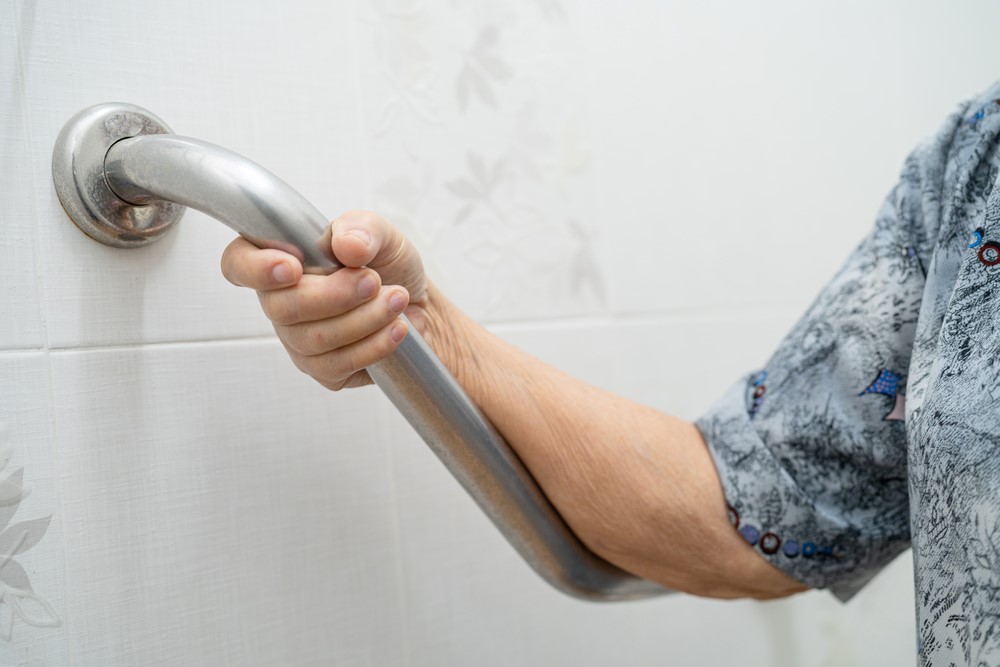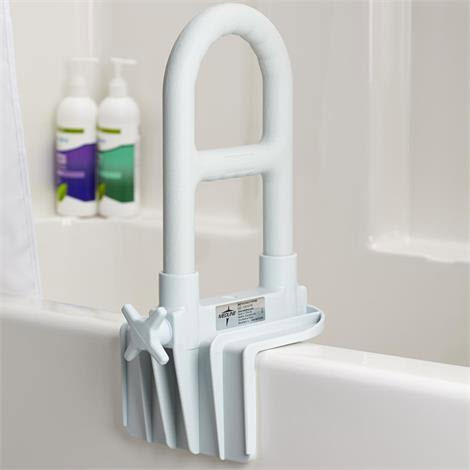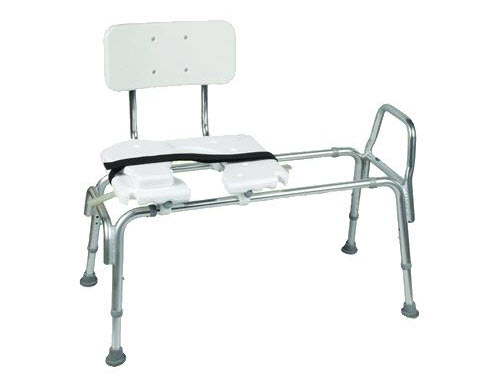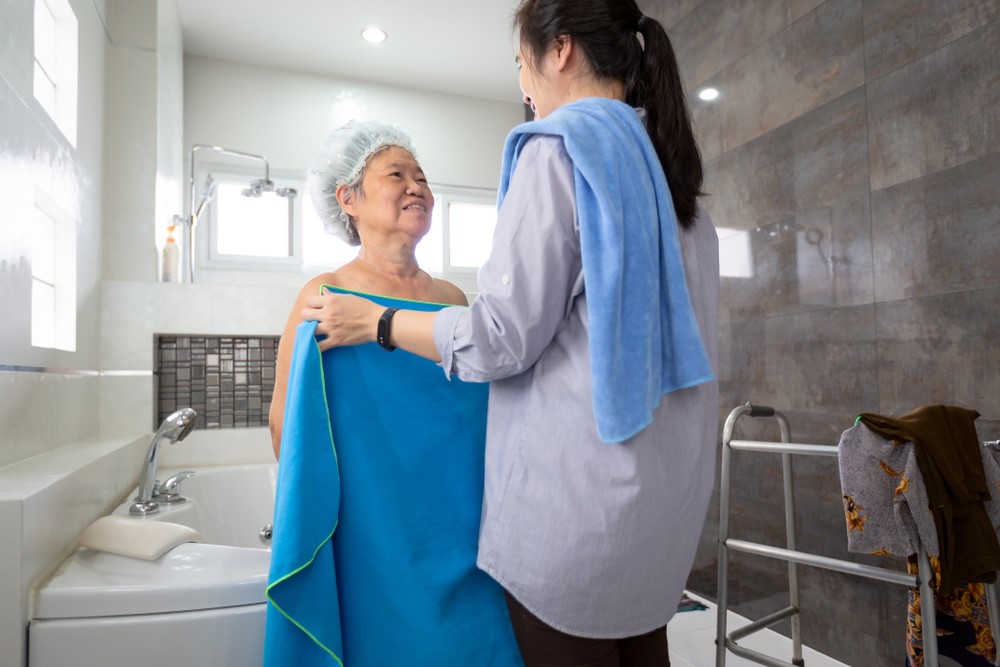
Bathing and personal hygiene can be serious problems for seniors and an area that often causes significant challenges and distress for caregivers. Indeed, as people get older they do often stop following personal hygiene habits and getting them to do so can frequently be an exercise in frustration.
So, why does this happen and what can you do about it?
Well, to start with, it’s worth taking a step back and looking at the situation as a whole.
Why Is Bathing Difficult?
For seniors and bathing, the issue is often connected to the challenge. While you and I tend to feel much better after having a shower and putting on clean clothes, the magnitude of the task can often be overwhelming for seniors.
And really, this isn’t surprising, as there are many steps involved in bathing. This includes getting into and out of the shower (or tub) safely, physically reaching and washing areas of their body, staying warm before and after, and working out which products to use.
These areas can often be confusing and frustrating, especially for seniors who struggle with movement anyway. These issues are even more significant for seniors who have cognitive difficulties, as they may get confused part way through the process.
At the same time, there may be mental blocks connected to seniors and bathing.
For example, depression in the elderly often results in a lack of interest in self-care. Likewise, isolated seniors may feel that there is little point in bathing, as nobody sees them anyway.
Understanding the reasons for resistance can help you determine the best approaches to take to tackle the situation.
In many cases, talking calmly and reasonably about the situation may help, especially in relation to the health risks of not bathing.
However, a more practical method is to find ways to make the bathing process as easy as possible. If you can lower the barriers to bathing, you can increase the chance that the senior will be willing to bathe regularly.
At the same time, doing so is important for promoting safety. After all, falls can strip seniors of their independence and taking steps to reduce the likelihood of falls truly is critical.
Specific Products and Approaches
Two particularly significant areas to consider are the process of moving into and out of the shower (or bath), along with being in it. Each of these areas comes with the potential for slips and falls.
Grab Bars

One solution for this problem is the use of grab bars. There are many different options, including some that you can install yourself and others that you may need to get professionally installed (like these ones).
As a general rule, professionally installed options are preferable, as they tend to be safer and more secure. This is also an area that you can talk to your doctor about and your landlord (if you are renting). In many cases, there may be funding available to have rails installed.
Please, be cautious with grab bars.
They can be amazing when they work well, but they can be dangerous when they’re poorly installed. Suction-based grab bars are particularly problematic, as the suction doesn’t always work well. If the senior puts all of their weight on the bar and it moves, they could seriously hurt themselves.
There are also some grab bars that can be attached onto the bath or similar areas, like the one below – although these also need to be installed carefully.

Sitting Inside The Shower
Another area to consider is standing. Many seniors may not have the strength to stand for long periods of time, which can make showering dangerous and stressful.
A simple solution to this is a stool that fits inside the shower.
These tend to be easy to obtain and use. Many are also fairly inexpensive.
The size of the stools also means that they are easily moved outside of the shower when anybody else is using it.
For example, this was the solution we used with my elderly mother-in-law to make bathing easier. The stool was slightly frustrating for everybody else but it did mean that she showered more often, which made the entire process worth it.
Transfer Benches
An extension of this idea is a transfer bench.

These have a similar advantage but are also useful for getting in and out of the shower. This style is particularly relevant for shower/tub combinations, where getting in can be particularly difficult.
The idea is that part of the bench sticks outside of the tub, allowing the senior to sit down and scoot across – rather than needing to step over the side of the tub.
Some designs also slide, meaning the senior doesn’t need to move themselves at all. However, the sliding style may break more easily and there is a risk of the senior getting pinched in the process.

The design works well, although you need to pay close attention to the setup at your home. For example, some tubs may be too high for specific benches (although most allow the height to be adjusted). Likewise, a transfer bench isn’t likely to work well with a shower door.
In some cases, you may also need to consider having a shower door removed and a curtain put up instead. This can make it easier to use tools like these and also reduces the risk of issues.
Basic Bathing Tools
There are also some basic tools that can make bathing much easier.
For example, long handled brushes can make it much easier for people to clean themselves and there is no shortage of options available.
Looking For Outside Help

One other approach is to have somebody bathe the senior. This may be yourself or somebody from an agency.
In some cases, this can be a viable solution, especially if you can find a person that the senior trusts. However, it is also much more challenging than it appears.
After all, having another person bathe you strongly symbolizes a loss of independence and can also be incredibly embarrassing. Many seniors are strongly resistant to this idea, regardless of how necessary it is.
We tried this ourselves with my mother-in-law at one point in time. Every so often she would agree to let the helper bathe her, normally if she knew she was going out the next day. But, more often than not, my mother-in-law would resist outright.
With this in mind, having a carer bathe the senior may not always be a viable solution. Still, it is worth considering because it can sometimes work extremely well.
Think About Scheduling
Finally, some people do find that scheduling helps.
For example, if you ask a senior whether they want a shower today – the answer will probably be no. But, you might say that they need to have one today, would they rather it be before or after breakfast? This type of approach can work well, especially as it provides advance notice and some degree of control for the senior.
Another option is to provide a reason. So, perhaps you may take them out or somebody may come over afterward. This can make the process seem less pointless, especially to seniors who don’t get out much.
The precise solution will tend to vary from one situation to the next.
But, finding ways to decrease the challenge of bathing is a critical first step for practicality and for safety. From there, behavioral options, like providing warning or incentive, can be relevant in helping the senior to bathe regularly.
You may never be able to get them to bathe as often as you’d like but this combination of ideas and items can help to improve the situation.
Feeling Overwhelmed?
Check out our Caregiving Consulting service for personalized support and guidance.

Leave a Reply